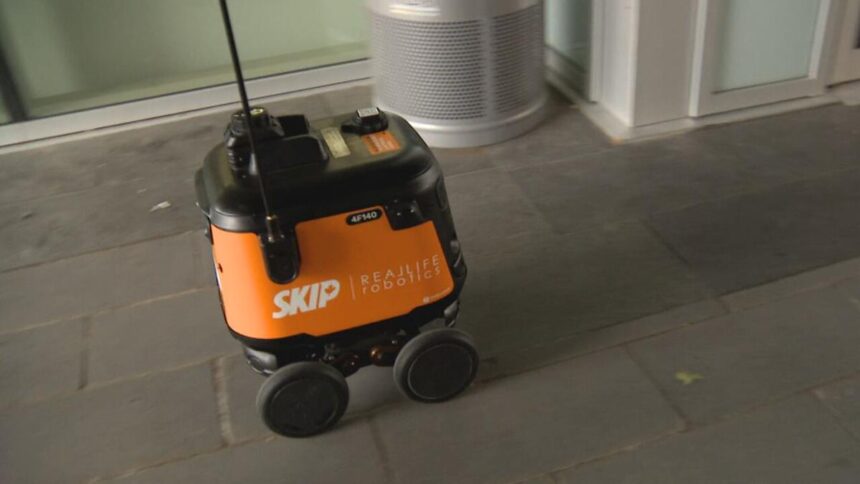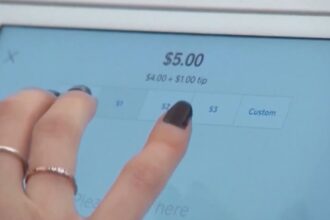In what may soon become a familiar sight across Canadian suburbs, autonomous food delivery robots have begun rolling down Markham’s sidewalks this week. The small white machines, resembling coolers on wheels, mark the city’s ambitious foray into robotic delivery technology—potentially revolutionizing how residents receive their takeout orders in Ontario’s high-tech corridor.
The City of Markham, in partnership with robot developer Tiny Mile, officially launched this six-month pilot program after receiving council approval in May. These knee-high delivery assistants are now navigating predetermined routes in the city’s downtown area, carrying meals from participating restaurants directly to customers’ doorsteps.
“This represents a significant step forward in our smart city initiatives,” said Markham Mayor Frank Scarpitti during the launch event. “We’re balancing technological innovation with practical solutions for both businesses and residents while maintaining our commitment to accessibility and safety on public pathways.”
Each robot operates under strict safety protocols, traveling at walking speed—approximately 6 km/h—and is equipped with multiple cameras and sensors to navigate around pedestrians and obstacles. While the robots function autonomously, they remain under human supervision through remote monitoring systems that can take control if needed.
The pilot follows similar successful deployments in cities across North America, including Toronto, where Tiny Mile has already completed thousands of deliveries. Markham’s program will specifically evaluate how these robots interact with pedestrians in suburban environments, particularly focusing on accessibility concerns for residents with mobility challenges.
Local restaurant owners express cautious optimism about the technology. “Delivery costs have been eating into our margins significantly,” said Jennifer Lee, owner of Urban Bowl, a participating restaurant. “These robots offer a potential solution that could reduce our expenses while providing reliable service to our regular customers within a 2-kilometer radius.”
The city’s economic development department reports that participating businesses may see delivery cost reductions of up to 30% compared to traditional third-party delivery services, potentially providing much-needed relief for restaurants still recovering from pandemic-related financial pressures.
Not everyone welcomes the mechanical couriers, however. Some community advocates have raised concerns about sidewalk congestion and potential accessibility issues for people with disabilities or the elderly. In response, the city has established clear operational guidelines and is collecting feedback throughout the pilot phase.
“We’re closely monitoring how these robots interact with all sidewalk users,” explained Markham’s Director of Innovation, David Chen. “This isn’t just about technology—it’s about creating a service that genuinely improves life for residents while respecting shared public spaces.”
The pilot program will run through spring 2024, after which city officials will evaluate performance metrics, safety data, and public feedback before deciding whether to extend or expand the service. If successful, Markham could join a growing list of Canadian municipalities embracing robotic delivery infrastructure.
As these small white robots quietly navigate Markham’s neighborhoods, they represent more than just a novel delivery method—they’re a glimpse into how emerging technologies continue reshaping our urban landscapes. The key question remains: will residents embrace these mechanical messengers as convenient innovations or view them as unwelcome additions to already crowded public spaces?
























